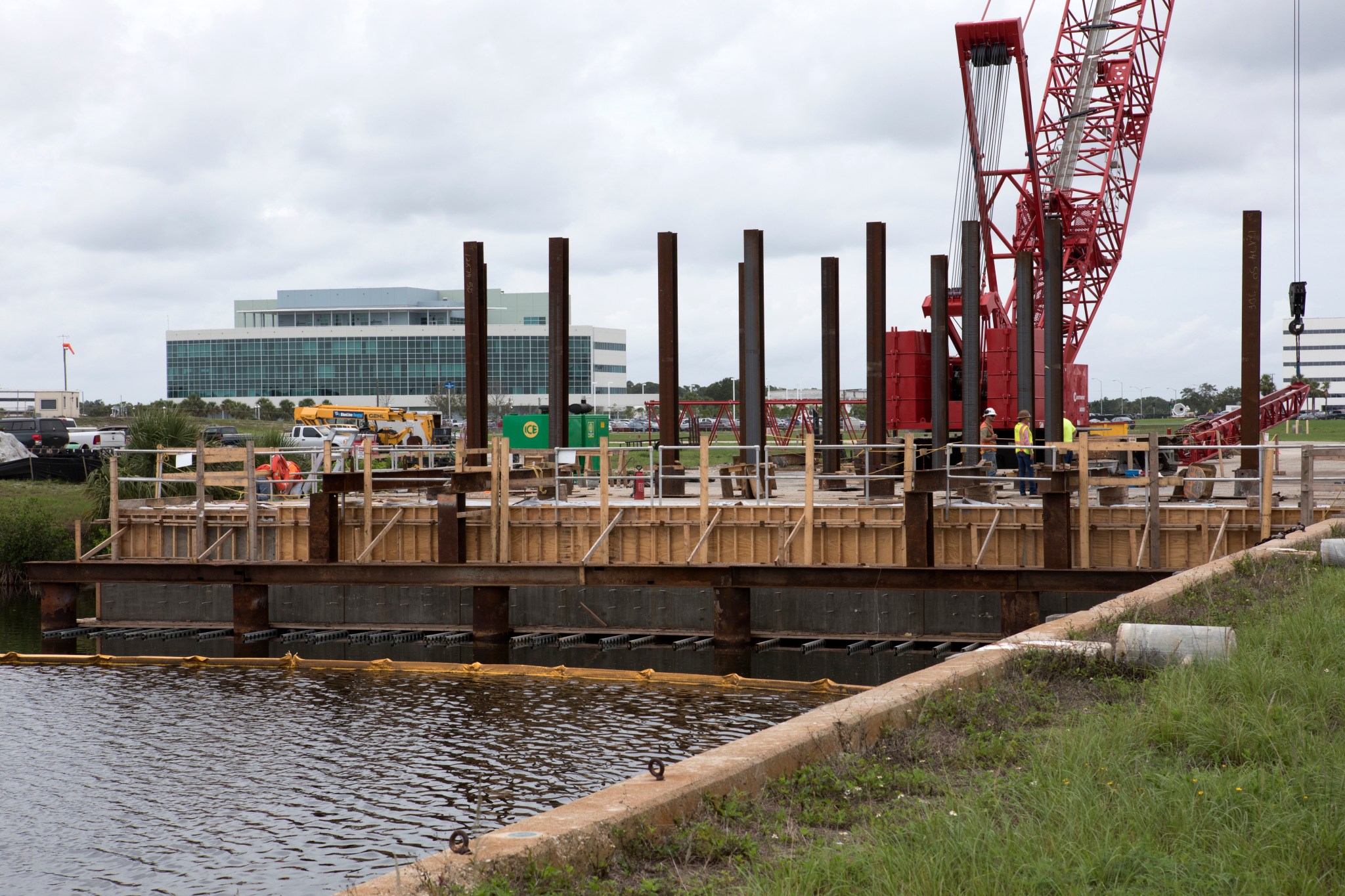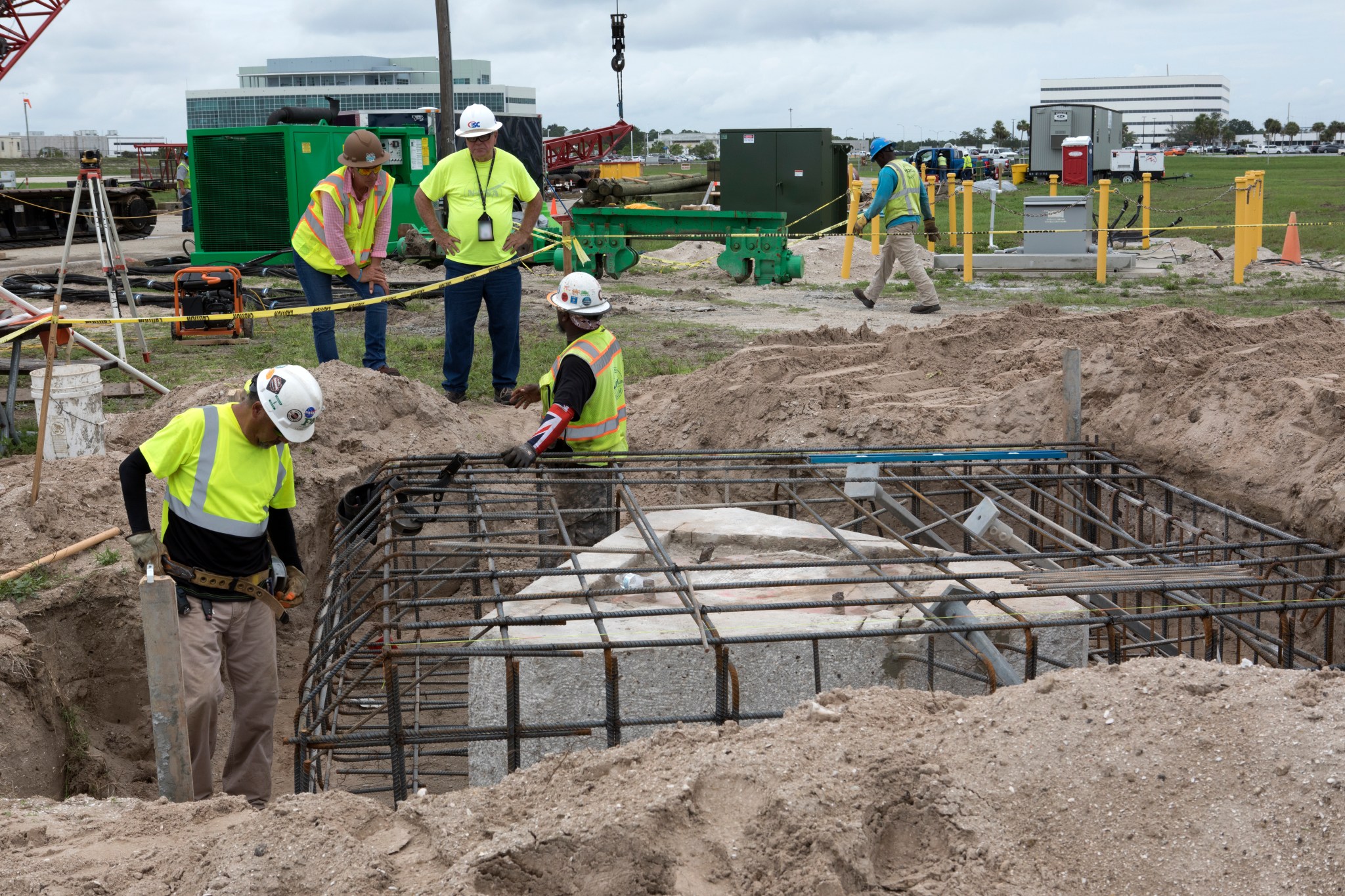
By Linda Herridge
NASA’s John F. Kennedy Space Center
When the core stage for NASA’s massive Space Launch System (SLS) rocket departs the Michoud Assembly Facility in New Orleans, it will be shipped by barge to the Launch Complex 39 turn basin wharf at NASA’s Kennedy Space Center in Florida to be integrated with other hardware in preparation for its first launch, known as Exploration Mission-1. Modifications are underway to upgrade the wharf and prepare for the arrival of the core stage.
Located just across the street from the iconic Vehicle Assembly Building (VAB), the dock area that was used for arrival and offloading of space shuttle external tanks is getting a makeover to accommodate the core stage when it arrives aboard NASA’s modified barge Pegasus. The 212-foot-long core stage, which is more than 50 feet longer than the space shuttle tank, serves as the structural backbone of the rocket and includes the SLS propellant tanks and four RS-25 engines. When Pegasus arrives at Kennedy’s turn basin, it will be carrying the core stage and all its ground support and transportation equipment — cargo that is more than 600,000 pounds heavier than Pegasus transported for the space shuttle.
“The turn basin is undergoing significant structural modifications and electrical upgrades to be ready for the core stage and Pegasus barge,” said Jimmy Rogers, a project manager with Kennedy’s Ground Systems Development and Operations (GSDO) Program. “Analysis was performed on how Pegasus was going to be moored at the wharf to offset wind load scenarios. The barge’s length was increased to 310-feet-long to meet barge-to-dock interface requirements for the core stage.”
The electrical system also is undergoing upgrades to meet new power requirements necessary to support Pegasus barge offloading operations. The new electrical system includes power receptacles for the SLS mobile transporter, which will carry the core stage to the VAB for processing and stacking.
Demolition and new construction began in December 2016 and is scheduled to be completed in August 2017. Southeast Cherokee Construction Inc., a woman-owned small business, is managing construction associated with the project for GSDO.
The work includes driving multiple precast concrete piles to a depth of about 70 feet around the wharf. A crawler crane lifts and sets each pile in place. When they are at a specified location, a pile-driving rig “hammers” the piles through soil and bedrock below the water. Concrete also is being added to strengthen the wharf.
“Ultimately, the wharf soon will be ready to receive the core stage, as well as other flight hardware components scheduled for delivery at Kennedy,” Rogers said.
NASA is preparing for the first integrated mission of the Orion spacecraft with the SLS rocket in 2019. During the uncrewed flight test, Orion will travel tens of thousands of miles beyond the moon and return home with a splashdown in the Pacific Ocean.



























